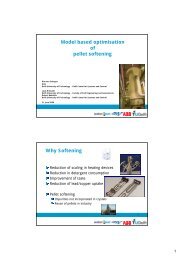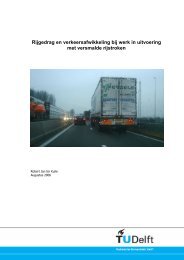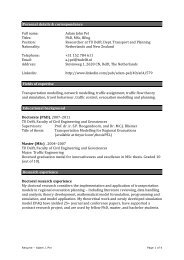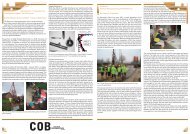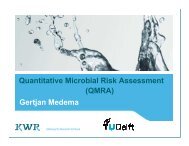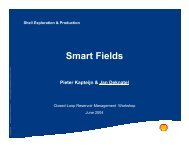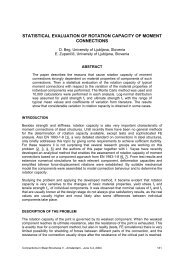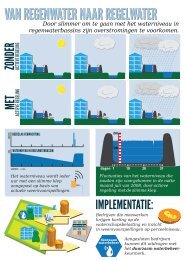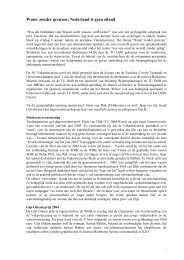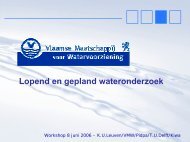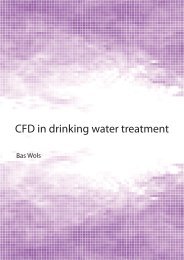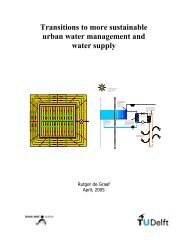Hydrological modelling of the Zambezi catchment for ... - TU Delft
Hydrological modelling of the Zambezi catchment for ... - TU Delft
Hydrological modelling of the Zambezi catchment for ... - TU Delft
You also want an ePaper? Increase the reach of your titles
YUMPU automatically turns print PDFs into web optimized ePapers that Google loves.
HYDROLOGICAL MODEL INPUT DATA<br />
3.1.1 Microwave-Infrared Rainfall Algorithm (MIRA)<br />
Due to large demand from meteorologists, climatologists and hydrologists on accurate and<br />
high-resolution rainfall estimates on a daily base, <strong>the</strong> MIRA [10] algorithm was developed<br />
(Todd et al, 2001). Previous algorithms, which determine <strong>the</strong> rainfall by remote sensing,<br />
usually have a spatial resolution <strong>of</strong> 2.5° and a monthly time scale. Some algorithms have a<br />
better spatial resolution, but this mostly means that <strong>the</strong> temporal resolution is bad and vice<br />
versa. The MIRA algorithm avoids this constraint by combining <strong>the</strong> input <strong>of</strong> <strong>the</strong> different<br />
satellite sources. The MIRA algorithm uses two sources:<br />
• Passive Microwave (PMW) and<br />
• Infrared (IR)<br />
The PMW is a low orbiting sensor that can provide accurate rainfall estimates, but suffer from<br />
poor temporal sampling. Conversely, <strong>the</strong> IR sensor provides high temporal data, but gives<br />
only a very weak signal and an indirect relationship with <strong>the</strong> surface rain.<br />
GOES Precipitation Index<br />
The most common algorithm to derive rainfall estimates out <strong>of</strong> <strong>the</strong> IR-sensor is <strong>the</strong> GOES<br />
Precipitation Index (GPI) (Arkin and Meisner, 1987). For large grid cells <strong>the</strong> IR-sensor<br />
measures <strong>the</strong> temperature <strong>of</strong> <strong>the</strong> cloud top and next <strong>the</strong> rainfall is calculated by:<br />
R = Fc<br />
× G× T<br />
Equation 3.1<br />
Where:<br />
R = rainfall per cell [mm]<br />
F c = fractional coverage <strong>of</strong> each cell by cloud colder than 235 K [%]<br />
G = GPI coefficient equal to 3.0 [mm/h]<br />
T = number <strong>of</strong> hours in <strong>the</strong> integration period [h]<br />
Atlas and Bell (1992) showed that <strong>the</strong> GPI (Equation 3.1) is essentially an area-time-integral<br />
(ATI) approach. This ATI approach (Doneaud et al., 1984) has been used to estimate <strong>the</strong><br />
storm rainfall volume from <strong>the</strong> area and duration <strong>of</strong> <strong>the</strong> storm measured by radar. As <strong>the</strong> GPI<br />
uses cold cloud area as a surrogate <strong>for</strong> rain, Atlas and Bell (1992) showed that G can be<br />
defined as:<br />
−1<br />
⎛A ⎞<br />
G = R ⎜ c ⎟ c ⎜A ⎟<br />
⎝ r ⎠<br />
Where:<br />
Equation 3.2<br />
22



